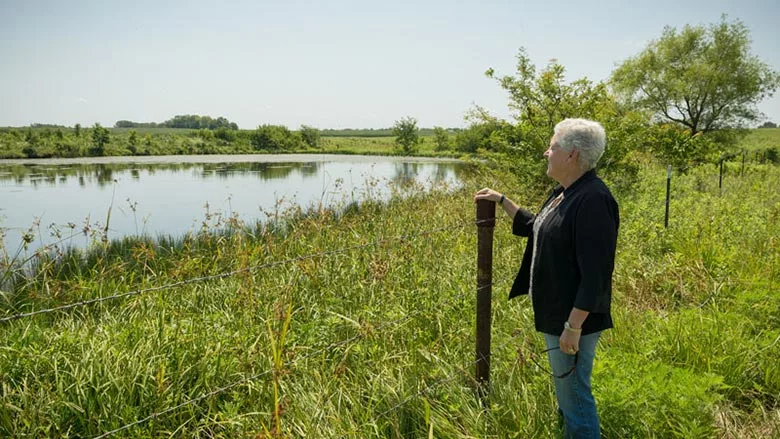EPA Implementing ‘Interim’ Good Neighbor Plan
EPA revising other regulations to ensure continued implementation of established requirements

Photo courtesy of the EPA.
In response to the Supreme Court (SCOTUS) halting enforcement of the Environmental Protection Agency’s (EPA) “Good Neighbor Plan,” (GNP) the EPA has issued an “interim” GNP that the agency says can be “reimplemented” until there is a “final judgment” by a federal court.
On Nov. 6, 2024, EPA’s “interim final action”—“Federal ‘Good Neighbor Plan’ for the 2015 Ozone National Ambient Air Quality Standards (NAAQS): Response to Judicial Stay”—became effective. In addition, EPA posted it on the Federal Register saying it is taking interim final action to stay the effectiveness of the requirements established to address the obligations for emissions sources in California, Illinois, Indiana, Maryland, Michigan, New Jersey, New York, Ohio, Pennsylvania, Virginia, Wisconsin, and of other states, with the goal of mitigating interstate air pollution with respect to the 2015 NAAQS for ozone.
EPA says while the effectiveness of the GNP’s requirements are under a judicial order staying EPA enforcement, the agency is “revising certain other regulations to ensure the continued implementation of previously established requirements to mitigate interstate air pollution with respect to other ozone NAAQS.”
The EPA also says while the effectiveness of the GNP’s requirements are under a judicial order staying EPA enforcement, the agency is “revising certain other regulations to ensure the continued implementation of previously established requirements to mitigate interstate air pollution with respect to other ozone NAAQS.”
The GNP sought to reduce ozone-forming emissions of nitrogen oxides (NOx) produced by power plants and industrial facilities in upwind states, and that reduction in industrial NOx would result in a reduction of their contributions to smog levels in downwind states, according to the EPA.
To achieve such reductions in emissions, in 2015 EPA increased NAAQS standards for ozone, and states were required to submit revised “state implementation plans” (SIP) by 2018 that comply with the more stringent NAAQS standards.
However, 21 states submitted SIPs in which they proposed to take no action to revise their SIPs because they said existing controls were adequate, or that such revisions would not contribute significantly to nonattainment, or interfere with maintenance of existing federal ozone standards in other states.
As a result, EPA took two actions in 2023 to address states’ “Good Neighbor obligations” under the 2015 NAAQS. The first was in February 2023, when the EPA disapproved the submissions by the 21 states. The second occurred on March 15, 2023, when the EPA issued a “federal implementation plan” (FIP), which is the GNP, for the 21 states that refused to revise their SIPs, as well as two additional states that had not submitted any revisions to their plans.
A number of states and industry groups challenged the FIP in the U.S. Court of Appeals for the D. C. Circuit, arguing that EPA’s decision to apply the FIP after so many other states had dropped out was “arbitrary” or “capricious,” and they requested an “emergency stay” of EPA enforcement of the FIP while their appeals unfolded. The D. C. Circuit denied the stay request, and the plaintiffs appealed to SCOTUS.
On June 27, 2024, SCOTUS issued its decision in the case Ohio v. EPA—which the high court consolidated with three other similar cases: Kinder Morgan, Inc v. EPA; American Forest & Paper Association v. EPA; and U.S. Steel Corp. v. EPA—ruling 5-4 to “stay” the EPA from enforcing the GNP.
Nonetheless, EPA says its interim GNP regulates emissions from electricity generating units (EGUs) and non-EGU industrial sources, and revises other allowance trading program regulations that apply to EGUs but not to non-EGU sources. The affected sources are generally in ten “industry groups,” including, basic chemical manufacturing; cement and concrete product manufacturing; fossil fuel electric power generation; glass and glass product manufacturing; iron and steel mills and ferroalloy manufacturing; metal ore mining; petroleum and coal products manufacturing; pipeline transportation of natural gas; pulp, paper, and paperboard mills; and solid waste combustors and incinerators.
In this action, the EPA says it is responding to the stay order by administratively staying the effectiveness of the GNP’s requirements for all emissions sources subject to the GNP as promulgated, and not just for those appealing to SCOTUS for a stay of GNP enforcement.
In addition, EPA says it is modifying its trading program regulations for EGUs to ensure that the existing good neighbor obligations of Illinois, Indiana, Maryland, Michigan, New Jersey, New York, Ohio, Pennsylvania, Virginia, and Wisconsin with respect to the 2008 ozone NAAQS will continue to be met while the administrative stay is in effect.
The amendments to the regulatory requirements for EGUs and non-EGU sources that are being finalized in this action in response to the stay order are intended to apply on an interim basis until the GNP’s requirements can be reimplemented, as appropriate and in accordance with the final judgment of a reviewing court, through a future rulemaking action, EPA says.
The EPA generally anticipates that any future action bringing the GNP’s requirements into effect after a stay would phase in the requirements so as to provide lead times to implement the GNP’s identified emissions control strategies comparable to the lead times that the GNP would have provided in the absence of the stay, thereby giving parties sufficient time to prepare for implementation, the agency says.
Despite the interim final action currently being in effect, EPA is accepting comments on the action. Comments can be filed at the website https://www.regulations.gov using the docket identification number EPA–HQ–OAR–2021–0668.
Read the Federal Register notice.Looking for a reprint of this article?
From high-res PDFs to custom plaques, order your copy today!




